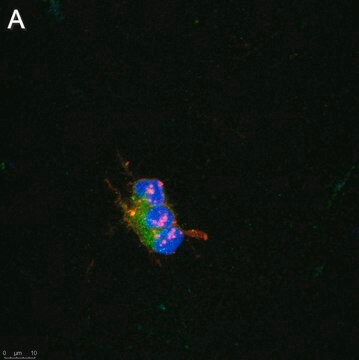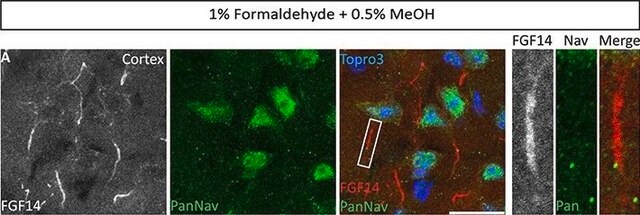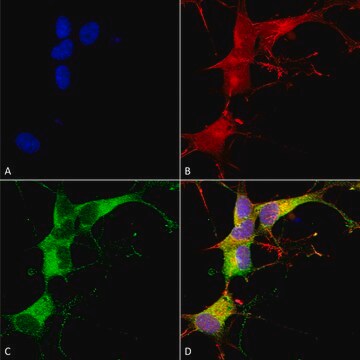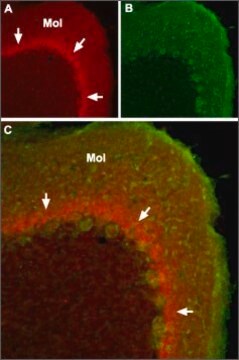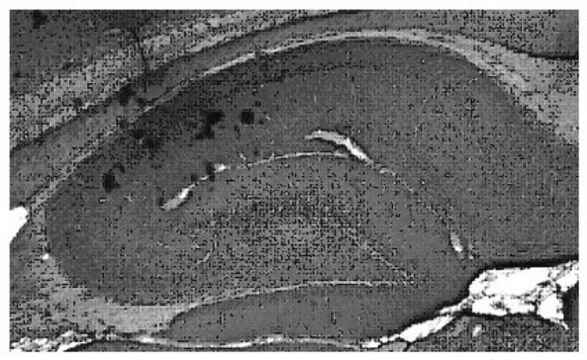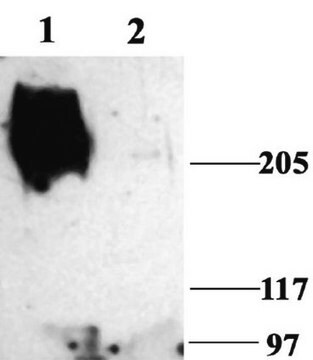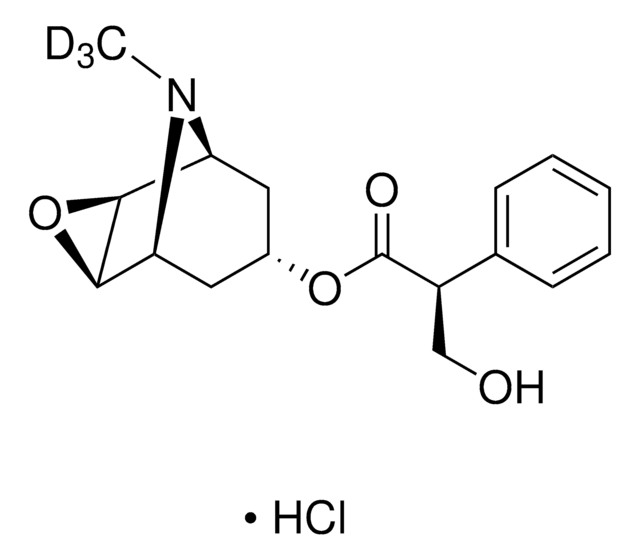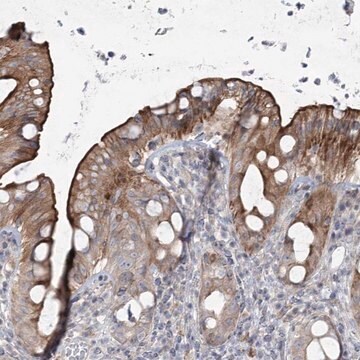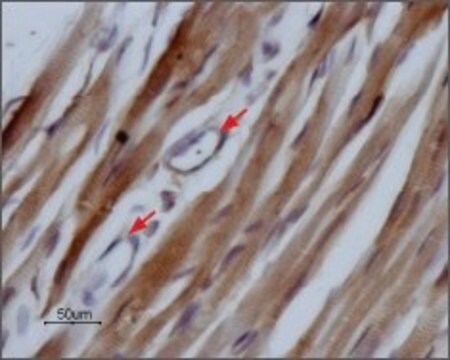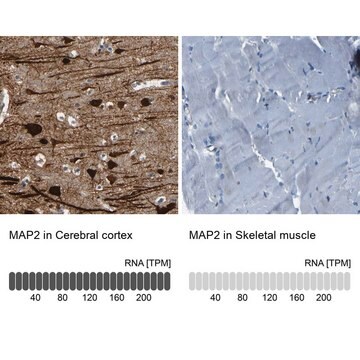S8809
Monoclonal Anti-Sodium Channel, Pan antibody produced in mouse
~1 mg/mL, clone K58/35, purified immunoglobulin
Sinônimo(s):
Sodium Channel Antibody
About This Item
Produtos recomendados
fonte biológica
mouse
Nível de qualidade
conjugado
unconjugated
forma do anticorpo
purified immunoglobulin
tipo de produto de anticorpo
primary antibodies
clone
K58/35, monoclonal
reatividade de espécies
mammals
concentração
~1 mg/mL
técnica(s)
immunohistochemistry (frozen sections): suitable
indirect immunofluorescence: 1 μg/mL using sciatic and optic nerve sections; cultured hypocampal neurons
western blot: 1 μg/mL using crude brain membrane prep (rat)
Isotipo
IgG1
nº de adesão UniProt
Condições de expedição
wet ice
temperatura de armazenamento
−20°C
Informações sobre genes
human ... SCN10A(6336) , SCN11A(11280) , SCN1A(6323) , SCN2A(6326) , SCN3A(6328) , SCN4A(6329) , SCN5A(6331) , SCN8A(6334) , SCN9A(6335)
mouse ... Scn10a(20264) , Scn11a(24046) , Scn1a(20265) , Scn3a(20269) , Scn4a(110880) , Scn5a(20271) , Scn8a(20273) , Scn9a(20274)
rat ... Scn10a(29571) , Scn11a(29701) , Scn1a(81574) , Scn3a(497770) , Scn4a(25722) , Scn5a(25665) , Scn8a(29710) , Scn9a(78956)
Descrição geral
Especificidade
Imunogênio
Aplicação
- immunohistochemistry(1:50)
- immunostaining (1:200)
- immunofluorescence
- immunocytochemistry (1:100)
Ações bioquímicas/fisiológicas
forma física
Informações legais
Exoneração de responsabilidade
Não está encontrando o produto certo?
Experimente o nosso Ferramenta de seleção de produtos.
recomendado
Escolha uma das versões mais recentes:
Já possui este produto?
Encontre a documentação dos produtos que você adquiriu recentemente na biblioteca de documentos.
Os clientes também visualizaram
Nossa equipe de cientistas tem experiência em todas as áreas de pesquisa, incluindo Life Sciences, ciência de materiais, síntese química, cromatografia, química analítica e muitas outras.
Entre em contato com a assistência técnica